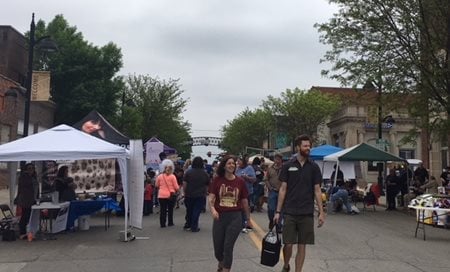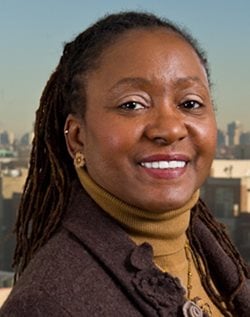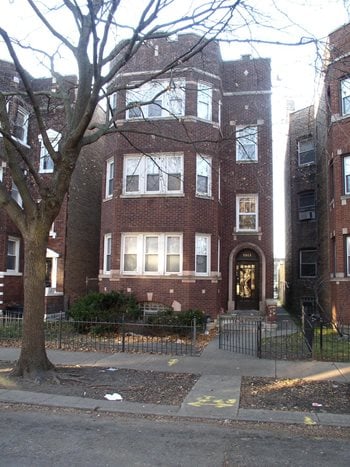Middle neighborhoods – those neighborhoods caught between growth and decline – were first developed to provide modestly priced homes to the growing middle class. "Middle neighborhoods provided families with the opportunity to own a home, build community and realize the American Dream," explains Paul Singh, NeighborWorks America's vice president for community initiatives. But many middle neighborhoods are facing serious challenges. Housing stock is aging. Some long-time residents are moving on and the neighborhoods aren't competing as they once did for potential homebuyers. A NeighborWorks America symposium Aug. 25 will focus on the best ways to help preserve and strengthen middle neighborhoods.
"If we're interested in promoting homeownership and access to wealth-building opportunities, these neighborhoods are the places where this has historically occurred in this country. And they're increasingly disappearing," says Singh. "Many of our network organizations serve middle neighborhoods. This is where a lot of their community building, neighborhood revitalization, homeownership and housing development work takes place. They are areas where a modest investment can result in outsized community impact."
Research from Alan Mallach of the Center for Community Progress shows an abundance of middle neighborhoods, particularly in legacy cities.
Following residents' leads
When Stephanie Murphy, executive director of Neighborhood Finance Corp., talks about middle neighborhoods, she talks about the partnerships moving them forward. That's especially true of Highland Park/Oak Park in Des Moines, Iowa. The two neighborhood associations were on the decline, but they had a strong history. The neighborhoods, which featured older homes and had a tradition of "Northside Pride," had history, too.
 Community members came together to talk about the future, with younger residents stepping up as older residents stepped down. They combined the two neighborhood organizations into one. In 2017, Murphy brought association residents to NeighborWorks America's Community Leadership Institute, where they worked on ways to reenergize their community and revitalize their parks. They planned and hosted a parks festival, designed to showcase community improvements. "We have a strong leadership tradition in Des Moines," Murphy says.
Community members came together to talk about the future, with younger residents stepping up as older residents stepped down. They combined the two neighborhood organizations into one. In 2017, Murphy brought association residents to NeighborWorks America's Community Leadership Institute, where they worked on ways to reenergize their community and revitalize their parks. They planned and hosted a parks festival, designed to showcase community improvements. "We have a strong leadership tradition in Des Moines," Murphy says.
Highland Park/Oak Park residents are committed to investing in where they live. With help from the City Council and partnering organizations like Invest DSM, which makes strategic investments in neighborhoods, one resident opened a coffee shop. Another, working with Neighborhood Development Corp., is opening a renovated historic restaurant, with apartments upstairs. Another opened a mercantile.
"It's fun to see what we hoped for happen, with neighbors meeting and stories evolving," says Drew Kelso, owner of The Slow Down Coffee Co. and vice president of the neighborhood association. A young Des Moines artist painted a mural for the shop, and merchants and local schools followed suit, giving the neighborhood a cohesive look. In a vibrant neighborhood, "people feel represented, heard and noticed," Kelso says. "When you get engaged with a neighborhood visually, emotionally and artistically, energy reverberates throughout."
Murphy says Highland Park/Oak Park is currently one of Neighborhood Finance Corp's more active lending neighborhoods. Her nonprofit is breaking ground on a new home there in partnership with Invest DSM and renovating another. "All of the things that need to happen to save neighborhoods are happening there at once."
'Neighborhoods on the brink'
 Deborah Moore, director of Neighborhood Strategy and Planning for Neighborhood Housing Services of Chicago, is a member of the Middle Neighborhoods Community of Practice, a group NeighborWorks America supports that brings together neighborhood organizations, community developers, municipalities and more. The Community of Practice is one component of a national Middle Neighborhoods initiative spearheaded by the National Community Stabilization Trust. The group has 1,000 members. Moore will lead a discussion on Black middle neighborhoods at the symposium.
Deborah Moore, director of Neighborhood Strategy and Planning for Neighborhood Housing Services of Chicago, is a member of the Middle Neighborhoods Community of Practice, a group NeighborWorks America supports that brings together neighborhood organizations, community developers, municipalities and more. The Community of Practice is one component of a national Middle Neighborhoods initiative spearheaded by the National Community Stabilization Trust. The group has 1,000 members. Moore will lead a discussion on Black middle neighborhoods at the symposium.
Though she's worked with middle neighborhoods for years, Moore hadn't used the terminology until recently. "I called those areas 'neighborhoods on the brink that could go either way,'" she says. When she thinks of Black middle neighborhoods, she thinks of the South Side's Chatham, a neighborhood that has housed Black doctors, lawyers, architects and others since the 1950s.
Chatham "was a stable place to raise a family. People wanted to move there, but the residents of Chatham didn't move," Moore says. "Once they were there, they stayed. They would pass [homes] on to family and create generational wealth." 
Around 2000, Moore saw a transition in the neighborhood. Children no longer wanted to take over the family home and ventured to new cities, like Atlanta, New York or Los Angeles. During the 2008 foreclosure crisis, a number of absentee landlords purchased properties. "That started to change the neighborhood." Homes started to fall into disrepair. NHS Chicago works with partners like the Greater Chatham Initiative to grow homeownership and develop recovery programs, researching vacant buildings and getting them on the market. They've promoted the neighborhood, which now has trolley tours and a restaurant row with outside seating.
"What's important now with these neighborhoods is to get them back to being neighborhoods of choice, where people really want to live," Moore says. "We have to keep them from eroding and move them toward thriving. We used to talk about saving the middle class in America. This to me, is the next step; we have to save middle neighborhoods."
Spotlight on the middle
Singh hopes the housing and community development field will leave the symposium with a greater appreciation for middle neighborhoods -- and with strategies to help them. Organizations well-versed in middle neighborhoods will also be able to engage with other practitioners to discuss needs and trends.
NeighborWorks America's support for middle neighborhoods dovetails its long-term support for community building and engagement and for community revitalization. "Because these neighborhoods are in a middle category, it's not going to take a drastic level of intervention and funding to bring them back," Singh says. "There's a lot of opportunity to make a difference in putting these neighborhoods back on a more positive trajectory. There's an opportunity to show how our network can play a critical role."
Registration for "Investing in the Future: Realizing the Opportunity of Middle Neighborhoods" is now open. The event features a full schedule of speakers and breakout sessions. Keynote speaker for the event will be Mary Pattillo, Northwestern University's Harold Washington Professor of Sociology and African American Studies. Read more about the full slate of speakers.
08/16/2021

